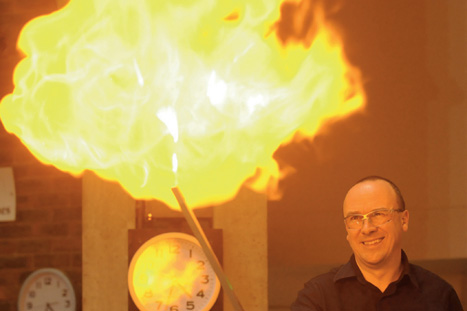Machine learning expert Prof Chris Bishop
Machine head: Computer science is set to enter a golden age, according to Microsoft Research’s Chris Bishop

The prestigious Royal Institution Christmas Lectures have been inspiring young engineers since Michael Faraday began them in 1825. Over the years, millions of excitable children have sat alongside equally excited adults as the likes of David Attenborough and George Porter have attempted to explain the world through magnificent experiments in chemistry, physics and biology.
One of those bright-eyed children was Christopher Bishop, now a partner at Microsoft Research in Cambridge and a leading expert in machine learning. ’I loved those lectures,’ said Bishop. ’I watched them every year and just found them incredibly inspiring. It’s probably one of the factors that has got me to where I am now.’
Today, Bishop is vice-president of the Royal Institution, chair of computer science at Edinburgh University and head of the Machine Learning and Perception group at Microsoft Research. In May, he was awarded the Rooke Medal for public engagement in engineering and science and is at present the only person in Europe to hold the title of ’distinguished scientist’ at Microsoft.
Register now to continue reading
Thanks for visiting The Engineer. You’ve now reached your monthly limit of premium content. Register for free to unlock unlimited access to all of our premium content, as well as the latest technology news, industry opinion and special reports.
Benefits of registering
-
In-depth insights and coverage of key emerging trends
-
Unrestricted access to special reports throughout the year
-
Daily technology news delivered straight to your inbox










Water Sector Talent Exodus Could Cripple The Sector
Maybe if things are essential for the running of a country and we want to pay a fair price we should be running these utilities on a not for profit...